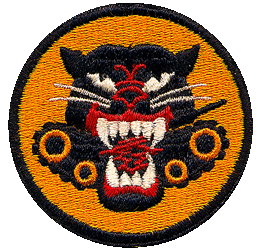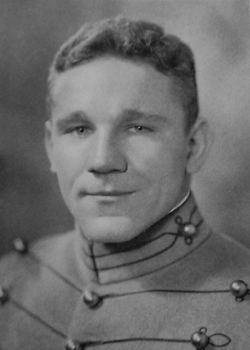 William V. Martz
William V. Martz
Biography: William Vincent Martz “Bill” was born on June 12, 1910, in Pottsville, Pennsylvania. He was the son of George Martz and Harriet Reed and graduated from Pottsville High School. While in school, he was a gifted athlete and competed in both track and football. He continued his education at Penn State College and after graduation, was accepted by the United States Military Academy at West Point.
While at West Point, he again participated in both track and football and became one of the school’s starring back fielders for the varsity football team. He graduated in 1935 and his yearbook bio states:
“A man you wouldn’t like to meet in a dark alley, is what you might say the first time you ever saw Bill. But your first impression couldn’t be more wrong. Bill is one of the kindest and most agreeable men in our class. He is rarely perturbed by the occurrences of life. He takes life easy when and where possible, but can be the picture of energy when necessary. “He is afraid of nothing.” Perhaps that explains his domination of the studies that once almost threw him for a loss and it certainly explains his power on the track and football field. So let’s drink a toast to Bill’s happiness and success and hope that sometime, somewhere, we will be reunited with him.”
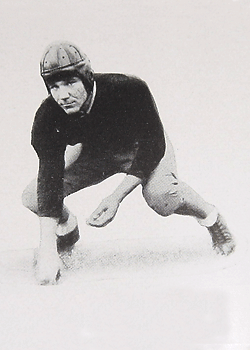
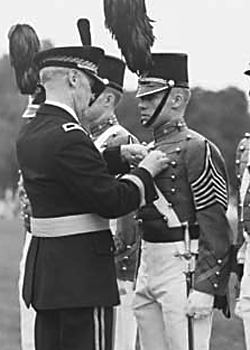
Service Time: After graduation, Bill was commissioned as a 2nd Lieutenant. He received his first duty station orders to proceed directly to Fort Riley, Kansas, as a Calvary Officer. From there, he was assigned to a number of other Army bases including, Fort Bliss, in El Paso, Texas, and Fort Knox, Kentucky. He was then sent to Panama. When he returned to the U.S., he was reassigned to Fort Riley and was selected to attend the U. S. Army Command and General Staff College, at Fort Leavenworth, Kansas. After his graduation, he was sent to Tank Destroyer Tactical Firing Center, at Camp Hood, Texas. By this time, Bill had risen to the rank of Lieutenant Colonel.
On June 29, 1943, Bill assumed command of the 654th Tank Destroyer Battalion from Colonel Lansing McVickar. McVickar was reassigned to another unit and sent to Europe. He tragically died on January 14th, 1945, while leading the 318th Infantry Regiment in Luxembourg. Beginning at Camp Gordon, Georgia, Bill was instrumental in creating and establishing an officers club for both officers and non commissioned officers, in the battalion area. He was also responsible for creating and implementing the publication of the “Panther”, a weekly battalion newspaper. He sponsored dances for the enlisted soldiers and took great interest in the battalion’s athletic activities. He was a valued leader in the initial phases of tactical training for the men of the battalion.
On September 30, 1943, the 654th marched out of Camp Gordon for the railroad yard and boarded two trains for the Port of Embarkation at Fort Slocum, New York. They shipped out on October 7th and arrived in Liverpool, England, on the 18th. Seven months later, they boarded transports and landed at Omaha Beach on July 11, 1944. The unit was equipped with M10s and was committed to battle on July 12th near Fallot, France.
On July 22nd, Lt. Col. Martz led a team of 10 volunteers to recover the bodies of 2nd Lt Maurice P. Alger, Jr. and 1st Lt. David J. Thelen, both of whom had been killed in action. Nine of the men were from Recon Company and one was from HQ Company. The area was still under continual bombardment and the enemy had repulsed several attempts to recover the bodies. The close proximity of the bodies under a pinned down tank was having a very demoralizing effect on the troops who were in a vital forward position. Martz and his volunteer group headed out into St. Lô, France, at 8:00 PM. The enemy had the whole area perfectly zeroed in from the high ground. The mission was successful and each of the men received the Bronze Star for their part.
At approximately 8:00 AM on the morning of August 8th, Martz, his driver, Pfc. Joseph Talon, and a radio operator, T5 Robert S. Allen, led by two Recon Co. Motorcycle Messengers, a Sergeant, and a Pvt. named Cam Garner, all went on a reconnaissance mission into the Mortain Sector in France. The plan was to find out the enemy’s position so that he could re-position the battalion’s tank destroyers. During this mission, they came under attack by a cross fire of heavy machine-guns. At the time, they were in the vicinity of St. Jean Du Corail.
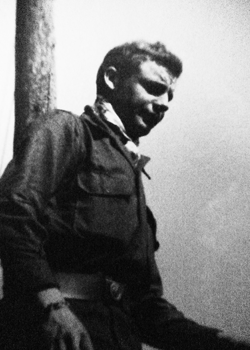 Martz, Talon, and Allen were all captured and subsequently became POW’s. The two men on motorcycles narrowly escaped after laying down their bikes and moving to cover. They quickly remounted and saw Martz’s jeep turn to follow them so they continued down the road. They soon realized that the jeep was no longer with them. A team was sent back to search for them but they were gone. It was confirmed by the German government, on September 10th, that he was a Prisoner of War.
Martz, Talon, and Allen were all captured and subsequently became POW’s. The two men on motorcycles narrowly escaped after laying down their bikes and moving to cover. They quickly remounted and saw Martz’s jeep turn to follow them so they continued down the road. They soon realized that the jeep was no longer with them. A team was sent back to search for them but they were gone. It was confirmed by the German government, on September 10th, that he was a Prisoner of War.
A Stars and Stripes newspaper article mentions Lt. Col. Martz and the fact that he had escaped from two Nazi prison camps. The article was basically an interview with the new Commander of the 654th, Lt. Col. John H. Minton. He had received a letter from Martz disclosing the activities that surrounded his capture and incarceration. The text from the article is shown below:
Captured at Mortain, Lieutenant Colonel William V. Martz, former Commanding Officer of the 654th Tank Destroyer Battalion, escaped from the Germans on his fourth attempt, a month before V-E Day, he revealed in a recent letter to Lt. Colonel John Minton, who succeeded him as Tank Destroyer Commander. “We went down the road,” he writes, describing their capture, which the Jerries had been astride for two days and which had been beautifully mined. Jerry with four machine guns had us bracketed at a maximum range of thirty yards. We managed to knock one of them out. “JERRIES POOR SHOTS” “One of three things-either the Jerries we’re darn poor shots, were scared of us, or didn’t want to wreck the jeep…. I think they were more interested in saving the jeep than killing us. They were SS troops that captured us. “The driver, Talon, was a cool customer.” After we abandoned the jeep and split in an attempt to get through the lines, he did some cool work- hopeless, to be sure, but it took 20 of the Jerries to get him to surrender and he got some of these. “He inadvertently walked directly over my position and got us all in the bag.” “SHOOT GUARD” Shortly after his capture, Martz shot his guard with the Germans own pistol and escaped only to be recaptured a short time later. “I had to do some fast work to talk myself away from the wall,” writes Martz. HEARD NEWS “During his time in POW camps, he kept in touch with the work of his TD men. “There were always new arrivals and from them I would keep track of the 654th from week to week and it was definitely wonderful….. The unit has a wide reputation. I wish to congratulate you all on your splendid work.”
Martz provides additional details of his incarceration in a letter, dated July of 1985, to a battalion veteran named Captain John W. Carson, another commander serving in Headquarters Company. He described the ordeal he had been through since being separated from his unit by saying: “When I was finally sent to a camp it was in Poland. We were marched all the way to West Germany, in front of the Russian advance. We ended up at Hammelburg. When Patton’s gang tried to liberate the camp, three of us made good on our escape and over a week’s time, moving only at night, we worked our way back to the US lines. I tried to return to the Battalion, but they would not let me return to a combat unit, instead, I was put in charge of a “Rest Camp” at Deauville, France. What a plush job that was, one of my guests was General Baade (35th Div) and he gave me some glowing reports on the Battalion, but nothing about individuals.”
Martz was incarcerated at Camp Hammelburg, within OFLAG XIII-B, Lower Franconia Bavaria, Germany. He escaped his captors a second time from there, on March 1945, just before General Patton’s special unit, “Task Force Baum”, had raided and liberated the camp in late March of 1945. General Patton’s son-in-law, Lt. Col. John K. Waters, just happened to be a POW. During the raid, on March 27, 1945, Waters was liberated from Camp Hammelburg, after having been captured in 1943, at “Kasserine Pass” in Tunisia. However, during the camp’s liberation, Waters was shot and seriously wounded by a German guard. At the time, he was carrying a white flag to the main gate of the camp.
Of the other men captured with Martz, T/5 Robert M. Allen was incarcerated at 005 Stalag “C, at Alt Drewitz Brandenburg, Prussia 52-14. He escaped, around January 31, 1945, when a battle between German and Russian Forces ensued around the camp. Pfc. Joseph F. Talon was incarcerated at 014 Stalag “7 B”, at Memmingen, Bavaria 48-10. Pfc. Talon was liberated by U. S. Forces sometime during 1945.
Martz was recommended for a Distinguished Service Cross, by General Paul W. Baade, but the award was never approved. He did receive two Silver Stars, one on August 15 and another on August 29 for “Gallantry in Action”. His Silver Stars were processed through the proper channels and he was awarded them when he returned to duty from POW status.
After duty in the “Rest Camp” in France, Martz returned home and was again assigned to Fort Riley. He had additional assignments in India, Fort Leavenworth, Fort Monroe, Virginia, and Iran. He returned to the U.S. and to Governor’s Island, New York, followed by Fort Stewart, Georgia, and then to Korea. During the Korean conflict he earned his third Silver Star and when he was sent home, he was assigned to Fort Knox, KY, until his retirement in 1962, at the rank of Colonel.
Bill had married Edna Mae prior to his deployment overseas and the couple had three children, a son and two daughters. Upon entering civilian life he made his residence in Upland, California, where he became a history teacher at Chaffee High School. He remained there until his retirement in 1975. Martz was also a member of the local VFW. Bill passed away at his home on January 28, 1998, at the age of 87. He was buried, on February 2, 1998, with full military honors at the Riverside National Cemetery, in Riverside, California, Plot 48 0 4727.
I want to thank Ann Gaule for providing the photos and information for this tribute.
